#urban canopies
Explore tagged Tumblr posts
Text
Tree protection activists stood silently at the back of the Seattle City Council chambers on Tuesday. The city's urban canopy wasn't on the meeting agenda so the group conveyed its message with signs that read "Save Our Trees," "Put Climate Justice on the Agenda" and "Don't Clear Cut Seattle." Organizers said they want to send a signal to city council that too many trees in Seattle’s urban forest are at risk because of housing developments. One tree in particular has become a flashpoint for this ongoing debate. Several groups have rallied in recent weeks around a massive red cedar in the city’s Wedgwood neighborhood. It appears protected for now, after intervention by the Snoqualmie Tribe. But as a new tree ordinance takes effect this Sunday, July 30, the question looms of how Seattle will protect its largest and oldest trees. On a recent morning in Wedgwood, birdcalls mixed with the sounds of construction. You could hear all kinds of songbirds —flickers and nuthatches, wrens, towhees and chickadees — near the cedar people are now calling Luma. It towered above, on the edge of a lot that’s been cleared for six new housing units. Up high in its branches was a tree-sitter who had been there for days. She said her name is Droplet and that she was there on Wednesday when the Snoqualmie Tribe came through with a state archeologist. “I got to look down and watch the Snoqualmie Tribe evaluate Luma and do ceremony. And it was the most incredible thing I've got to witness,” she said. After the ceremony and site inspection, they concluded that Luma is a culturally modified tree, its limbs bent into a kind of living trail marker, likely pointing the way on a route connecting Lake Washington and Puget Sound. “So instead of cutting down a tree and building a signpost, it was done in a way that allowed the tree to remain living and healthy,” said Jaime Martin, the executive director of governmental affairs and special projects for the Snoqualmie Tribe. Under state law, the tree is now subject to protection as an archeological site. The developer, Legacy Group Capital, will need a permit from the state Department of Archeology and Historic Preservation before they can modify it. The state said getting one will take at least 60 days, including 30 days for consultation with the tribe that registered the artifact. Legacy Group Capital did not respond to a request for comment. She said Seattle has no protections in place for culturally modified trees – not in its current tree ordinance and not in the new one. ”Basically, the city has a huge blind spot. And that's how to work with tribes and how to have meaningful consultation,” Martin said. Both the city and the tribe have stated their desire to work to fix that. However, tree activists say the Wedgewood cedar is just one example of how Seattle is failing to protect its largest trees. Numerous amendments proposed by the city’s appointed Urban Forestry Commission meant to address this and other concerns did not make it into the new tree ordinance. Calls for a better balance between the needs of developers and those of tree protectionists fell on deaf ears. Despite assurances that fixes could be made before the new code takes effect, it appears nothing is in the works. And any future amendments will take months, if not years, to implement. Councilmember Dan Strauss, who chairs Seattle’s Land Use Committee and presided over the update of the ordinance that passed in May, declined to be interviewed for this story. But he spoke at a council briefing earlier this month: “At the final passage of the tree protection ordinance, I stated the desire to clean up and continue refining this ordinance. I still believe that today,” he said. He said council will craft and pass a resolution outlining the scope and process for amendments. This will happen either in September or December, depending on the responsiveness of stakeholders. In the meantime, the Snoqualmie Tribe has called on Mayor Bruce Harrell to use his executive power to delay enactment of the new tree ordinance.
#seattle#culturally modified trees#archeology#snoqualmie#coast salish#trees#urban canopies#urban development#luma#tree ordinance
5 notes
·
View notes
Text

Carrollton
New Orleans
Source
21 notes
·
View notes
Text
Atlanta's tree canopy has to co-exist with more growth in residential density
by Darin Givens, 9/20/2023
There's an excellent op-ed in the AJC today arguing that Atlanta's need for greater density of people can co-exist with a tree canopy; even if we initially lose some trees for housing development, there's a great opportunity to expand the canopy in targeted ways.
Here's a quote from it:
"Higher density development makes further room for new street trees and stormwater infrastructure. Parking lots could become dense, energy efficient housing. Road lanes for cars could be transformed into tree-lined cycleways. If we’re willing to replace a fraction of Atlanta’s road space with trees we could have cool, shaded streets even in our city’s densest neighborhoods without sacrificing limited developable land."
Replacing some of our asphalt with trees is a great idea. In the Vine City neighborhood alone, the amount of land that's surrounded by heat-trapping parking lots is substantial, and likely contributes to heat island effects (see below).
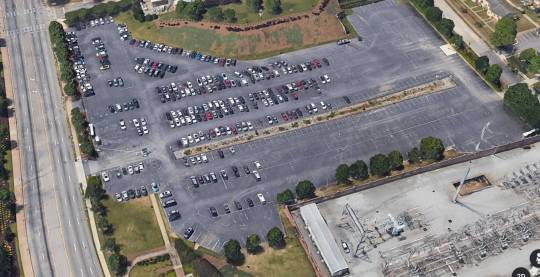
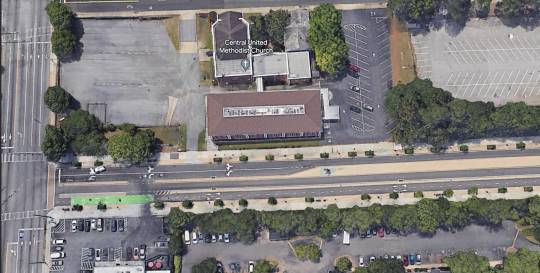


One problem is that the conversation about tree canopy in Atlanta can often be used to block the exact type of infill development that's needed for addressing climate change by creating a more walkable, more transit-supportive city.
The op-ed addresses this:
"As our city looks to update its zoning and tree ordinances, we must recognize that a “save every existing tree” approach ignores the realities of our environment, development finance and housing affordability. We need to plant more trees, but mandating green infrastructure without providing adequate flexibility or incentives can hinder the dense development that we desperately need to lower carbon emissions and house our growing population."
Well said!
The piece was written by Anton Gudiswitz (chapter lead at Abundant Housing Atlanta) and Jason Lathbury (transportation committee chair for the Georgia Sierra Club). Kudos to them.
#atlanta#urbanism#urban planning#city planning#density#urban density#urban development#walkable cities#climate action#tree canopy
25 notes
·
View notes
Text
Software and consulting company PlanIT Geo™ provides innovative planning and technology for urban forestry, parks and arboriculture. Projects including urban tree canopy assessments, field-based tree inventories and strategic plan development; and the company’s TreePlotter™ software is often used by thousands of urban foresters, arborists, park managers and tree care companies around the world.
Hanou believes his company’s purpose is to add “technology capacity” through data, information and tools to any organization that wants to measure, manage and protect green assets whether someone represents a large city, a small tree care company, a corporate or university campus or a nonprofit organization.
The origin of PlanIT Geo comes from the technology advancements of the early 2000s. High-resolution satellite imagery was becoming broadly available and the analysis software to make sense of those pixels was also rapidly improving. “For the first time, the distribution of tree canopy within a city could be mapped via satellite imagery with a high degree of accuracy.”
3 notes
·
View notes
Text

A relentless heat
Cool breeze offers no relief
Urban summer day
#poem#poetry#cwh#photography#poems on tumblr#poems and quotes#original poem#photograph#poems and poetry#poems#sidewalk#urban life#urban photography#urban landscape#urban exploration#city#graffiti#graffittiart#graffart#graffti#graffityart#graffiti art#trees and forests#trees#urban canopy#shade#ottawa#canada
3 notes
·
View notes
Photo









Up high in the sky atop megastructures you’ll never know the purpose of, the Canopy is swarming with predators. You must be quite the predator too, to decide to come here. Or perhaps you’re just foolhardy.
Rain World Locations: Chimney Canopy
credit:
🗼 🌉 🗼
🌉 🌆 🌉
🗼 🌉 🗼
#rain world quest (L)#rain world#rainworld#chimney canopy rw#red#yellow#orange#black#flashing#fast gif#food#food stim#sky stim#timelapse#skies#city#urban stim#industrial stim#industrial#hands#paint mixing#squishy stim#glow
12 notes
·
View notes
Text
jesus christ that sounds horrible

#like fine sure put them in between or under the trees and canopies or in places where trees cant grow the features mentioned are sustainable#they sound like a neat ADDITION#but the article says an ALTERNATIVE to trees in urban areas#what a fucking nightmare#no fucking trees??#the things that give you shade and make the endless geometries of bare beige and gray concrete bearable??#who the fuck wants to get rid of them?#what urban planner wants to ERP as the fucking onceler??
42K notes
·
View notes
Text
I love these streets
I have always loved tree covered streets for as long as I can remember. There is just something so warm and inviting to streets like this. There is a draw to these streets that will make me want to walk down the street even if I’m not going in that direction. The tree canopy is beautiful and I will always enjoy the ecstatic. Thanks for stopping by, Rob
#autumn#BC#beautiful#British Columbia#Canada#city#City Life#cycling#dog walk#fall#Kelowna#nature#neighbhourhood#people#photo#Photographer#Photography#pretty#street#street photography#tree canopy#trees#Urban
0 notes
Text
Meet David Kirton during Arbor Week

View On WordPress
#adventure#afforestation#Arbor Week#awareness#biodiversity#Biodiversity Conservation#canopy growth#celebration#community#conservation#Conservation Efforts#Cultural Celebration#development#discovery#Ecosystem#ecosystem health#education#engagement#environmental advocacy#environmental awareness#environmental impact#Environmental Protection#environmental stewardship#Event#exploration#forest#forest management#future#George Genereux Urban REgional Park#green sanctuary
0 notes
Text

Autumn skies above the canopy
#nature#nature in the city#london#urban wildlife#everyday nature#make time for nature#trees#look up#autumn skies#autumn in the city#autumn#clouds#cloud watching#september#tree canopy#breathe
1 note
·
View note
Text
Things the Biden-Harris Administration Did This Week #28
July 19-26 2024
The EPA announced the award of $4.3 billion in Climate Pollution Reduction Grants. The grants support community-driven solutions to fight climate change, and accelerate America’s clean energy transition. The grants will go to 25 projects across 30 states, and one tribal community. When combined the projects will reduce greenhouse gas pollution by as much as 971 million metric tons of CO2, roughly the output of 5 million American homes over 25 years. Major projects include $396 million for Pennsylvania’s Department of Environmental Protection as it tries to curb greenhouse gas emissions from industrial production, and $500 million for transportation and freight decarbonization at the ports of Los Angeles and Long Beach.
The Biden-Harris Administration announced a plan to phase out the federal government's use of single use plastics. The plan calls for the federal government to stop using single use plastics in food service operations, events, and packaging by 2027, and from all federal operations by 2035. The US government is the single largest employer in the country and the world’s largest purchaser of goods and services. Its move away from plastics will redefine the global market.
The White House hosted a summit on super pollutants with the goals of better measuring them and dramatically reducing them. Roughly half of today's climate change is caused by so called super pollutants, methane, hydrofluorocarbons (HFCs), and nitrous oxide (N2O). Public-private partnerships between NOAA and United Airlines, The State Department and NASA, and the non-profit Carbon Mapper Coalition will all help collect important data on these pollutants. While private firms announced with the White House plans that by early next year will reduce overall U.S. industrial emissions of nitrous oxide by over 50% from 2020 numbers. The summit also highlighted the EPA's new rule to reduce methane from oil and gas by 80%.
The EPA announced $325 million in grants for climate justice. The Community Change Grants Program, powered by President Biden's Inflation Reduction Act will ultimately bring $2 billion dollars to disadvantaged communities and help them combat climate change. Some of the projects funded in this first round of grant were: $20 million for Midwest Tribal Energy Resources Association, which will help weatherize and energy efficiency upgrade homes for 35 tribes in Michigan, Minnesota, and Wisconsin, $14 million to install onsite wastewater treatment systems throughout 17 Black Belt counties in Alabama, and $14 million to urban forestry, expanding tree canopy in Philadelphia and Pittsburgh.
The Department of Interior approved 3 new solar projects on public land. The 3 projects, two in Nevada and one in Arizona, once finished could generate enough to power 2 million homes. This comes on top of DoI already having beaten its goal of 25 gigawatts of clean energy projects by the end of 2025, in April 2024. This is all part of President Biden’s goal of creating a carbon pollution-free power sector by 2035.
Treasury Secretary Janet Yellen pledged $667 million to global Pandemic Fund. The fund set up in 2022 seeks to support Pandemic prevention, and readiness in low income nations who can't do it on their own. At the G20 meeting Yellen pushed other nations of the 20 largest economies to double their pledges to the $2 billion dollar fund. Yellen highlighted the importance of the fund by saying "President Biden and I believe that a fully-resourced Pandemic Fund will enable us to better prevent, prepare for, and respond to pandemics – protecting Americans and people around the world from the devastating human and economic costs of infectious disease threats,"
The Departments of the Interior and Commerce today announced a $240 million investment in tribal fisheries in the Pacific Northwest. This is in line with an Executive Order President Biden signed in 2023 during the White House Tribal Nations Summit to mpower Tribal sovereignty and self-determination. An initial $54 million for hatchery maintenance and modernization will be made available for 27 tribes in Alaska, Washington, Oregon, and Idaho. The rest will be invested in longer term fishery projects in the coming years.
The IRS announced that thanks to funding from President Biden's Inflation Reduction Act, it'll be able to digitize much of its operations. This means tax payers will be able to retrieve all their tax related information from one source, including Wage & Income, Account, Record of Account, and Return transcripts, using on-line Individual Online Account.
The IRS also announced that New Jersey will be joining the direct file program in 2025. The direct file program ran as a pilot in 12 states in 2024, allowing tax-payers in those states to file simple tax returns using a free online filing tool directly with the IRS. In 2024 140,000 Americans were able to file this way, they collectively saved $5.6 million in tax preparation fees, claiming $90 million in returns. The average American spends $270 and 13 hours filing their taxes. More than a million people in New Jersey alone will qualify for direct file next year. Oregon opted to join last month. Republicans in Congress lead by Congressmen Adrian Smith of Nebraska and Chuck Edwards of North Carolina have put forward legislation to do away with direct file.
Bonus: American law enforcement arrested co-founder of the Sinaloa Cartel, Ismael "El Mayo" Zambada. El Mayo co-founded the cartel in the 1980s along side Joaquín "El Chapo" Guzmán. Since El Chapo's incarceration in the United States in 2019, El Mayo has been sole head of the Sinaloa Cartel. Authorities also arrested El Chapo's son, Joaquin Guzman Lopez. The Sinaloa Cartel has been a major player in the cross border drug trade, and has often used extreme violence to further their aims.
#Joe Biden#Thanks Biden#kamala harris#us politics#american politics#politics#climate change#climate crisis#climate action#tribal rights#IRS#taxes#tax reform#El Chapo
773 notes
·
View notes
Text
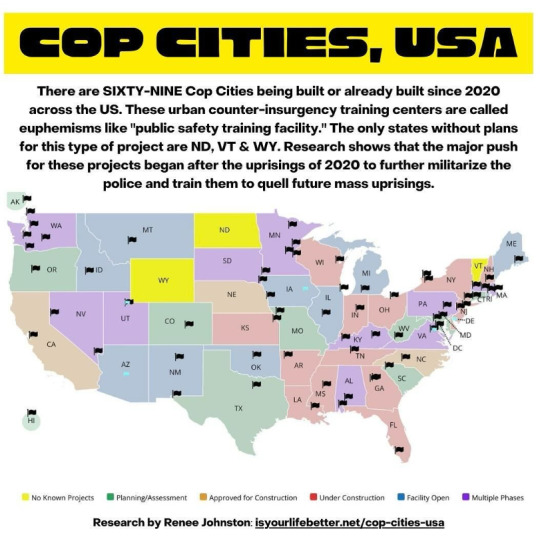
The Stop Cop City movement has sought to prevent the expropriation of part of the Welaunee Forest for the development of an 85-acre police mega training center: a model town to prepare the state’s repressive arms for the urban warfare that will ensue when the contradictions of their exploitation and extraction become uncontainable, as they did in 2020 after the APD murdered Rayshard Brooks. That murder, and all those that came before, were the lodestars of the Black-led movement during the George Floyd uprisings; their demands were no less than the dismantlement of the entire carceral system. Unable to effectively manage or quell the popular street movements, the Atlanta Police Foundation set out to consolidate and expand their capabilities for surveillance, repression, imprisonment, armed violence, and forced disappearance. One result is Cop City, which has been racked by militant sabotage, land occupation, arson, and popular mobilizations, in an attempt to end the construction and return Atlanta to its people. As the Atlanta Police Foundation was unable to contain the 2020 Black rebellion, so too have they been unable to quell the resistance against Cop City. The press reports that the project is hemorrhaging money and is mired in delays and difficulties. For their part, the city, the state, and the federal government, have in turn employed every tool in their power to destroy the movement. Last week, the Georgia State Senate passed a bill to effectively criminalize bail funds in the state; RICO charges have been contorted to target networks of support and care that surround the fighters; and last January, APD assassinated the comrade Tortuguita in cold blood while they rested in their tent in the forest. It is clear that Stop Cop City represents one of the conjunctural spear tips for expanding the existing systems of counterinsurgency that span Africa, Asia, and the Arab world. Today the system’s belly rests atop Gaza, whose rumblings shake the earth upon which we walk. Through its Georgia International Law Enforcement Exchange (GILEE) program, the APD has sent hundreds of police to train with the Zionist occupation forces. And in October 2023, after Tufan al-Aqsa, the Atlanta Police Department engaged in hostage training inside abandoned hotels, putatively intended to “defeat Hamas,” in an advancement of tactics for the targeting of Black people. With every such expansion, the ability of counterinsurgency doctrines to counteract people’s liberation struggles grows. The purpose of counterinsurgency is to marshal state and para-state power into political, social, economic, psychological, and military warfare to overwhelm both militants and the popular cradle—the people—who support them. Its aim is to render us hopeless; to isolate and dispossess us and to break our will to resist it by any and all means necessary. This will continue apace, unless we fight to end it. Stop Cop City remains undeterred: on Friday, an APD cop car was burnt overnight in response to the police operation on February 8; yesterday, two trucks and trailers loaded with lumber were burnt to the ground. An anonymous statement claiming credit for the former, stated: “We wish to dispel any notion that people will take this latest wave of repression lying down, or that arresting alleged arsonists will deter future arsons.” As the U.S. government and Zionist entity set their sights on the Palestinian people sheltering in Rafah, as they continue their relentless genocide of our people in Khan Younis, Jabalia, Shuja’iyya, and Gaza City, the Stop Cop City movement has clearly articulated its solidarity with the Palestinian struggle. They have done so with consistency and discipline, and we have heard them. Our vision of freedom in this life and the next requires us to confront and challenge the entangled forces of oppression in Palestine and in Turtle Island, and to identify the sites of tension upon which these systems distill their forces. This week, as with the last three years, the forest defenders have presented us one such crucible.
(11 Feb 24)
National Lawyers Guild, Stop All Cop Cities: Lessons For a National Struggle (video, 1 hr 45 min)
1K notes
·
View notes
Text
"A recent World Meteorological Organization report called heat waves the “deadliest meteorological hazard” from 2015 to 2019, affecting people living on all continents, and setting new national heat records in many regions.
Canada’s top weather event in 2021 was British Columbia’s record-breaking heat, according to Environment and Climate Change Canada. The temperature in Lytton, B.C., hit 49.6 C on June 29. The following day a wildfire destroyed 90 per cent of the town, killing two people and displacing 1,200 others.
Heat waves also exacerbate existing health issues, including cardiovascular and respiratory disease. They’re associated with increased hospital admissions, psychological stress and aggressive behavior, as well as excess mortality.
During heat waves, the highest temperatures are often found in urbanized areas. Urbanization is almost always associated with an increase in paved, impervious areas, and often a decrease in greenery. Concrete and asphalt roads, and other built materials readily absorb, store and release heat, raising city temperatures, a phenomenon called the urban heat island.
Many studies have shown that urban forests can reduce the urban heat island, and many policies focus their attention on large green spaces.
Small green spaces, such as yards, rooftops and small parcels of undeveloped land, can make impressive contributions to lowering urban heat, but they are often overlooked when developing strategies for urban cooling.
The effect of small green spaces
Cities rarely have the opportunity to add large green spaces to help counter the effects of heatwaves. Smaller vegetated spaces, however, can still meaningfully decrease local land temperatures.
Small green spaces, such as yards, rooftops and small parcels of undeveloped land, can make impressive contributions to lowering urban heat, but they are often overlooked when developing strategies for urban cooling.
A recent study in Adelaide, Australia, found that tree canopy cover and, to a lesser extent, grass cover decreased local daytime surface temperatures by up to 6 C during extreme summer heat conditions. Further inland, suburban yards and gardens can decrease local surface temperatures up to 5 C.
At a quite small scale, on the order of tens of square metres, trees reduced daytime surface temperatures twice as much as grass cover. But grass and other small, low-lying plants, grow relatively quickly, compared to trees.
Cities should adopt short-term and long-term strategies to respond to extreme heat, including the replacement of paved and impervious surfaces with grasses and turf, and increasing tree plantings to boost canopy coverage.
Amplifying the cooling effect
Furthermore, when managing small green spaces, city planners and foresters can select tree species based on their ability to cool the environment. Green spaces with a high diversity of tree species have a greater cooling effect in spring, summer and fall. They also have a larger maximum drop in temperature in the summer, compared to spaces that are less diverse.
For example, tree canopies with large leaves and high transpiration rates — the evaporation of water from plants occurring at the leaves — could provide more cooling.
Planting a variety of species, of different heights, can have a larger cooling effect than tall trees alone.
The structure of green space may also influence its cooling efficiency. In summer, a plant community with multiple layers of trees, shrubs and herbs can further decrease air temperature by 1 C on a sunny day and 0.5 C on a cloudy day, compared with an area only dominated by tall trees...
But overall, trees usually have a stronger effect on cooling than grass. Planting trees in groups, not individually or in lines, is recommended for regulating the microclimate (local climate conditions near the Earth’s surface).
Small green spaces can offer a lot of summer cooling in cities. And cities can learn to manage the configuration of small green spaces better to get more cooling benefits and minimize the trade-offs."
-via GoodGoodGood, July 4, 2024
#green space#urban#urban landscape#urban forest#urban green spaces#food forest#permaculture#gardening#microclimate#cooling#conversation#global warming#climate change#climate action#solarpunk#rooftop garden#ecopunk#meterology#ecology#ecosystems#environmental science#plant trees#good news#hope
704 notes
·
View notes
Text
Good News - May 15-21
Like these weekly compilations? Support me on Ko-fi! Also, if you tip me on Ko-fi, at the end of the month I'll send you a link to all of the articles I found but didn't use each week - almost double the content!
1. Translocation of 2,000 rhinos in Africa gets underway in “one of the most audacious conservation efforts of modern times”
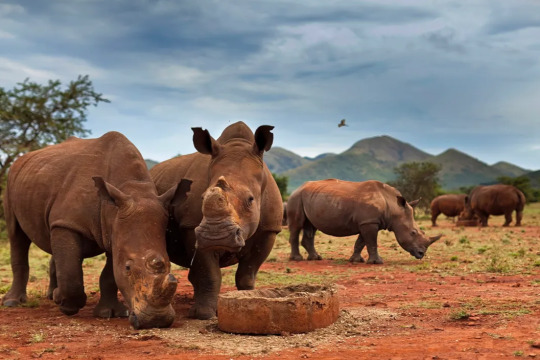
“The 2,000 rhinos - more than are currently found in any single wild location in Africa - represent around 12-15% of the continent’s remaining white rhino population. […] “Rhinos perform an important ecological function in the environment as a large grazing herbivore,” says Dale Wepener[….] “The protection of rhino is far more than just looking after rhino; other species that occur in the protected areas will benefit from the protection,” explains Jooste. “This will lead to an increase in diversity and result in much healthier ecosystems.”
2. Florida Corridor Buffers Effects of Climate Change on Wildlife — And People
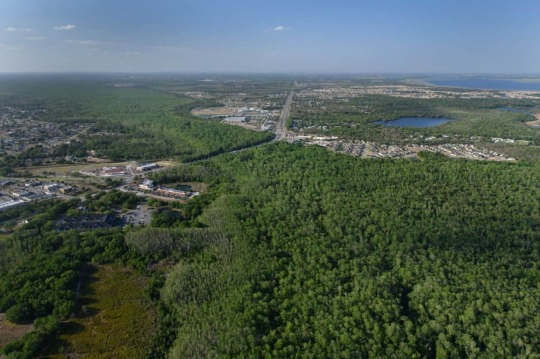
“A massive multi-partner effort that has conserved 10 million acres for wildlife in Florida over past decades will help buffer wildlife—and people—from the effects of climate change, a new report says. […] Protecting these corridors is important for wildlife genetics, demography and connectivity […], conducting prescribed fires in the corridor can reduce the risk of more intense wildfires [… and] they can provide buffers against hurricanes and seasonal thunderstorms.”
3. Global life expectancy to increase by nearly 5 years by 2050 despite geopolitical, metabolic, and environmental threats
“Increases are expected to be largest in countries where life expectancy is lower, contributing to a convergence of increased life expectancy across geographies. The trend is largely driven by public health measures that have prevented and improved survival rates from cardiovascular diseases, COVID-19, and a range of communicable, maternal, neonatal, and nutritional diseases (CMNNs).”
4. Valencia has Spain’s longest urban park

“Jardin del Turia (Turia Garden) is the green spine of the City of Valencia and Spain’s (and possibly Europe’s) longest urban park stretching for a length of 8.5 kilometres [… and] the current administration plans to make Jardin del Turia Europe’s largest city green space by extending it to the sea[….] Almost all Valencia residents (97 per cent) live within 300 metres of an urban green space. […] Jardin del Turia is a true urban oasis that provides exceptional thermal comfort, with a temperature difference of up to three degrees compared to other areas of the city.”
5. This Paint Could Clean Both Itself and the Air
“When an artificial ultraviolet light source shines on [photocatalytic] paint, the nanoparticles react with pollutants to make them break down—theoretically removing them from the nearby air and preventing a discoloring buildup. [… R]esearchers developed a new photocatalytic paint that they claim works using UV rays from ordinary sunlight, making its self-cleaning properties easier to activate. They’ve also shown that they can effectively produce this paint from recycled materials [including fallen leaves].”
6. Planting Seedlings for a Cooler Rockingham
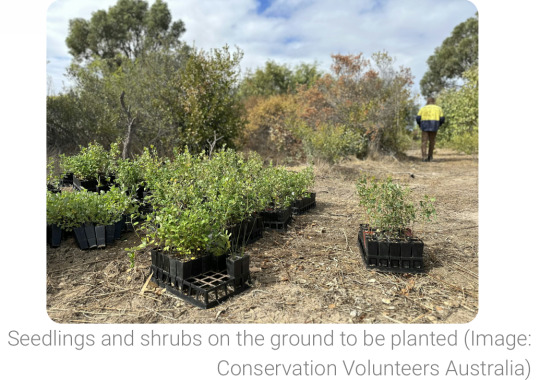
“A dedicated group of volunteers recently planted over a thousand native seedlings in Lewington Reserve [… and] re-established canopy cover to areas of the reserve to create cooling shade for the local community and provide homes for native wildlife. […] Planting lots of trees and shrubs in urban areas can help create shade and cool cities, mitigating the impacts of climate change, contributing to biodiversity conservation and building greener, more resilient communities.”
7. Sydney’s first dedicated affordable housing for trans women designed to deliver ‘positive outcomes’
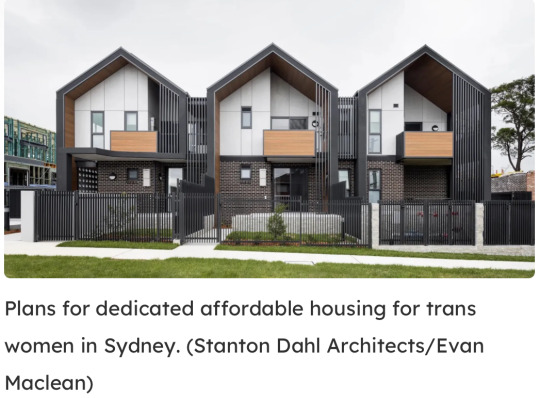
“Community housing provider and charity Common Equity NSW, […] which is for people on very low to moderate incomes, prides itself on creating inclusive living and promotes the independence and well-being of people and communities […, and] will deliver the first-of-its-kind social housing in a bid to provide a safe place to live for transgender women seeking an affordable home.”
8. Rewilding: How a herd of bison reintroduced to Romania is helping ‘supercharge’ carbon removal
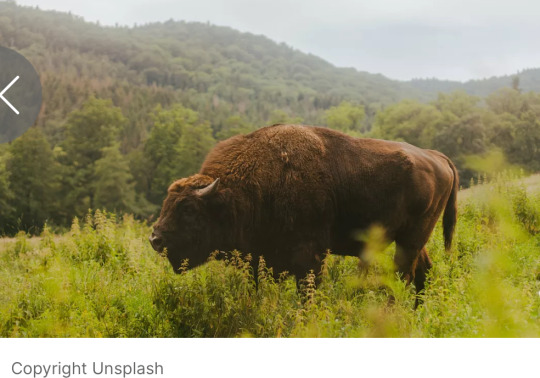
“170 European Bison reintroduced to Romania’s Țarcu mountains could help capture and store the carbon released by up to 84,000 average US petrol cars each year. […] By grazing a 48 square kilometre area of grassland in a wider landscape of 300 kilometres squared, they helped to capture an additional 54,000 tonnes of carbon each year. That is around 10 times the amount that would be captured by the ecosystem without the bison.”
9. World’s biggest grids could be powered by renewables, with little or no storage
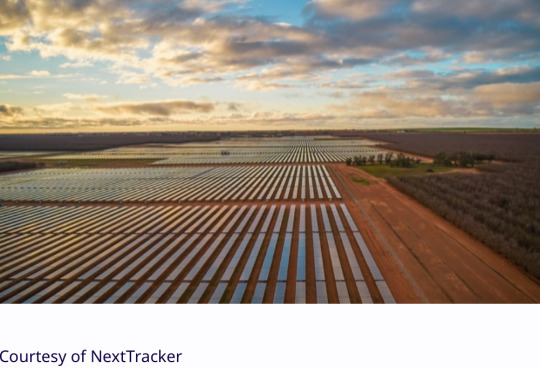
“[…] 100% renewable supply can then match the load by putting surplus electricity into two kinds of distributed storage worth that [an energy expert] says are worth buying anyway – ice-storage air-conditioning and smart bidirectional charging of electric cars, and recover that energy when needed, filling the last gaps with unobtrusively flexible demand.”
10. Supporting the Long-Term Survival of Copper River Salmon and Alaska Native Traditions
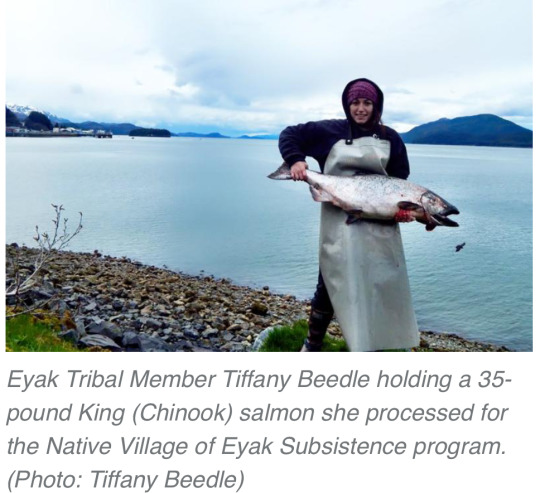
“With $4.3 million in NOAA funds, the Copper River Watershed Project and The Eyak Corporation will remove fish passage barriers, opening more streams for salmon spawning and subsistence fishing. [… As part of this effort, o]ld narrow culverts that constrict water flow will be replaced with “stream simulation” culverts wide enough to fit the full stream, including its banks. They are also deep to allow contractors to place stones and other material inside to mimic a natural stream bottom.”
May 8-14 news here | (all credit for images and written material can be found at the source linked; I don’t claim credit for anything but curating.)
#hopepunk#good news#rhino#white rhino#africa#conservation#rewilding#climate change#florida#wildlife#life expectancy#health#spain#green space#urban parks#recycling#trees#global warming#trans#affordable housing#australia#bison#romania#carbon#carbon capture#renewableenergy#reforestation#salmon#alaska native#nature
386 notes
·
View notes
Text
Viet-A-Porter - Street Vendor Part 2







🍲🥢🍽️🪑
Hey there Simmers!
We're finally back with part 2 of our street vendor collection. This time, we're excited to introduce you to an everyday scene featuring one of Saigon's most iconic street foods - Hủ Tiếu. Accompanying this famous dish is the equally iconic Hủ Tiếu cart! But that's not all – from the trusty plastic stool to the expansive umbrella, we're striving to recreate the intimate and down-to-earth ambiance of everyday Vietnamese street life with this flavorful set:
All item is Base Game Compatible (BGC)
Hu Tieu Vendor Cart | 5 swatches
Morning Noodle Clutter | 5 swatches
Tiny Perch Stool | 5 swatches
Converti Seat Table | 5 swatches
Aqua Oasis | 1 swatch
Sun Guard Canopy | 10 swatches
Saigon's street cart culture may be easily overlooked, yet the perceptive gaze of a curious observer is all it takes to remind us once again why these carts are the foundation of our urban tapestry!
As always, we want to express our heartfelt gratitude for your continued support. We are incredibly grateful to have you on this journey with us!
📍Get the set now on PATREON (Public Release 13/01)
✨ Our Social: Tumblr | Twitter | Instagram | CurseForge
@maxismatchccworld @maxismatchccworlds @sssvitlanss @coffee-cc-finds @coffee-houses-finds @lanaccfind @sssvitlanz
#the sims 4#s4#ts4#s4cc#sims 4#ts4cc#the sims 4 cc#s4ccmm#s4mm#ts4ccmm#the sims 4 stuff pack#cc stuff pack#sims 4 cc#maxis match#2023#vietnam#streetfood#ts4 for rent#thesims4forrent#the sims 4 outdoor
1K notes
·
View notes